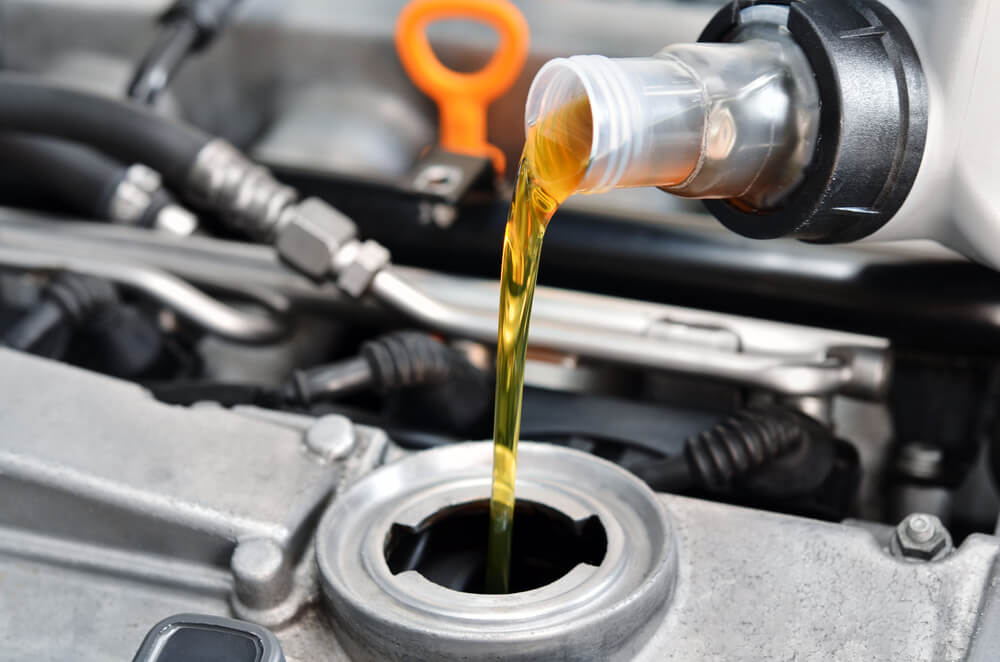Title: “When to Check Motor Oil: A Comprehensive Guide”
Introduction:
Motor oil serves as the lifeblood of your vehicle’s engine, ensuring smooth operation, reducing friction, and preventing costly damage. Yet, it’s one of the most overlooked aspects of car maintenance. Knowing when to check your motor oil is vital for preserving the health and longevity of your engine. In this guide, we’ll explore the telltale signs that indicate your motor oil needs attention, the recommended frequency for checks, and the simple steps to perform this essential task. By understanding when and how to check your motor oil, you’ll not only keep your engine running smoothly but also avoid unexpected repair bills down the road.
1. Signs Your Motor Oil Needs Attention
Your vehicle’s engine depends on motor oil to function properly, providing lubrication, cooling, and protection against wear and tear. Regularly checking your motor oil is crucial to ensure your engine remains in top-notch condition. Here are the key signs that indicate your motor oil needs attention:
- Dashboard Warning Lights: Modern cars are equipped with sophisticated sensors that monitor various aspects of your vehicle, including oil pressure. If the oil pressure drops below a safe level, a warning light on your dashboard will illuminate. This is a clear indicator that your motor oil may be low or in poor condition.
- Unusual Engine Noises: If you start hearing strange, knocking, or clattering sounds from your engine, it’s time to check your motor oil. Insufficient or deteriorating oil can lead to increased friction between engine components, causing these unsettling noises.
- Smoke or Unusual Exhaust Emissions: When the motor oil is compromised, you might notice excessive smoke or unusual exhaust emissions coming from your vehicle’s tailpipe. This can be a sign of oil burning in the engine, which is a serious issue that needs immediate attention.
- Decreased Fuel Efficiency: A drop in your vehicle’s fuel efficiency could be related to inadequate lubrication caused by low or deteriorated motor oil. Reduced lubrication increases friction, making your engine work harder and consume more fuel.
- Oil Level on Dipstick: The simplest and most direct way to check your motor oil is by using the dipstick. If the oil level on the dipstick is below the recommended range or if the oil appears dirty and dark, it’s a sign that you need to address your motor oil.
- Oil Change Reminder: Many vehicles have a sticker in the corner of the windshield reminding you of the date or mileage at which your next oil change is due. Ignoring this reminder can lead to problems, so always adhere to the recommended maintenance schedule.
- Strong Oil Odor: If you detect a strong, burnt oil smell inside the cabin while driving, it could indicate oil leakage or oil seeping into the engine compartment. Investigate and address this issue promptly.
- Visible Oil Leaks: Check under your parked vehicle for any oil spots on the ground. Oil leaks can occur due to worn gaskets, seals, or other engine components. Addressing leaks promptly is essential to prevent further damage.
Paying attention to these signs can help you determine when your motor oil needs attention. Regular oil checks and timely oil changes are vital for maintaining the health and longevity of your engine, ultimately saving you money on costly repairs and ensuring your vehicle runs smoothly for years to come
Recommended Frequency for Checking Motor Oil
Proper motor oil maintenance is the cornerstone of ensuring your vehicle’s engine runs smoothly and efficiently. To achieve this, it’s crucial to understand the recommended frequency for checking your motor oil. While the ideal interval can vary depending on your vehicle’s make and model, here are some general guidelines to help you determine when to check your motor oil:
1. Monthly Checks: For most vehicles, performing a quick oil check every month is a good rule of thumb. This routine allows you to stay on top of your engine’s health and catch any potential issues early. It’s a simple task that can save you from more significant problems down the road.
2. High-Performance or Older Vehicles: High-performance cars and older vehicles may require more frequent oil checks. These vehicles often have engines that operate under higher stress levels, leading to increased oil consumption. Check your owner’s manual or consult with a mechanic to determine the best schedule for your specific vehicle.
3. Factors Affecting Oil Consumption: Keep in mind that several factors can affect the rate at which your vehicle consumes motor oil. If you frequently engage in stop-and-go city driving, towing heavy loads, or driving in extreme temperatures, your engine may use oil more quickly. In such cases, consider checking your oil more frequently.
4. Oil Change Intervals: It’s important not to confuse checking your oil with changing your oil. The frequency of oil changes is typically longer than the frequency of checks. Consult your vehicle’s owner’s manual for manufacturer-recommended oil change intervals. These intervals often range from 3,000 to 7,500 miles, but they can vary depending on the type of oil used and your driving conditions.
5. Newer Vehicles and Synthetic Oils: Newer vehicles and those using synthetic oils often have longer oil change intervals. Synthetic oils tend to offer better engine protection and can extend the time between oil changes, sometimes up to 10,000 miles or more. However, it’s still essential to perform regular oil checks, even with synthetic oils.
6. Establish a Routine: To make oil checks a habit, it’s helpful to establish a routine. Pick a specific day each month or a specific mileage interval to check your oil. Keeping a log of your oil checks and oil changes can help you stay organized and ensure you don’t miss crucial maintenance tasks.
We can recommend frequency for checking your motor oil varies based on your vehicle, driving habits, and the type of oil used. Regular oil checks are a small investment in time that can lead to significant savings by preventing engine damage and extending the life of your vehicle. By adhering to a routine and staying vigilant, you’ll ensure that your engine remains well-lubricated and ready for the road ahead.
How to Check Motor Oil
Checking your motor oil is a straightforward yet essential aspect of vehicle maintenance. This routine task ensures that your engine is adequately lubricated, preventing costly damage and ensuring optimal performance. Here’s a step-by-step guide on how to check your motor oil:
1. Gather the Necessary Tools:
Before you begin, make sure you have the following tools on hand:
- A clean, lint-free rag or paper towel.
- The vehicle’s owner’s manual (for oil specifications and dipstick location).
2. Park on a Level Surface:
To obtain accurate oil level readings, park your vehicle on a level surface. Ensure the engine is cool, as hot oil can give false readings.
3. Locate the Dipstick:
Open the vehicle’s hood and locate the engine’s oil dipstick. It usually has a brightly colored handle, often labeled “Engine Oil” or “Oil.”
4. Remove the Dipstick:
With a firm grip on the handle, carefully pull the dipstick out of the tube. Be cautious not to drip oil onto the engine or surrounding components.
5. Wipe and Reinsert the Dipstick:
Using your rag or paper towel, wipe the dipstick clean of any oil residue. Make sure it’s entirely dry before reinserting it back into the tube.
6. Remove and Inspect the Dipstick Again:
Carefully pull the dipstick out once more, and this time, pay attention to the oil level and quality. The dipstick will have markings or indicators to show the proper oil level. It may also have crosshatch patterns or two marks, indicating the acceptable range.
7. Interpret the Oil Level:
Inspect the oil level on the dipstick. If the oil level falls between the “Add” and “Full” marks or within the designated safe range, your oil level is adequate. If it’s below the “Add” mark, you’ll need to add oil. If it’s above the “Full” mark, consider draining a bit of oil to reach the correct level.
8. Check the Oil Quality:
Examine the color and consistency of the oil on the dipstick. Fresh motor oil is typically amber or light brown. If the oil appears dark, dirty, or has a burnt smell, it’s time for an oil change.
9. Reinsert the Dipstick:
Once you’ve checked the oil level and quality, securely reinsert the dipstick back into the tube.
10. Close the Hood: – Close the vehicle’s hood and ensure it’s properly latched.
11. Record Your Findings: – Keep a maintenance log or note the results of your oil check, including the date and mileage. This record will help you track your vehicle’s oil consumption and maintenance history.
Regularly checking your motor oil is a simple yet critical practice in keeping your engine healthy and ensuring your vehicle runs smoothly. By following these steps and staying on top of your oil checks, you can enjoy peace of mind on the road, knowing your engine is well-lubricated and ready for the journey ahead.
When to Top Off or Change Motor Oil
Knowing when to top off or change your motor oil is essential to maintain your vehicle’s engine health and longevity. Here are the key factors to consider when determining whether it’s time to add more oil or schedule an oil change:
1. Oil Level on Dipstick:
Regularly check the oil level using the dipstick as mentioned earlier. If the oil level is close to or below the “Add” mark on the dipstick, it’s time to top off the oil. Ensure you use the recommended oil type and viscosity specified in your vehicle’s owner’s manual.
2. Oil Change Intervals:
Refer to your vehicle’s owner’s manual for the manufacturer-recommended oil change intervals. These intervals can vary based on factors such as the type of oil used (conventional or synthetic), your driving conditions, and the vehicle’s age. In many cases, it’s suggested to change the oil every 3,000 to 7,500 miles.
3. Oil Appearance and Quality:
Inspect the color and consistency of the oil on the dipstick during oil level checks. Fresh oil is typically amber or light brown. If the oil appears dark, gritty, or has a burnt odor, it’s a sign that the oil is dirty and no longer effectively lubricating the engine. In such cases, it’s time for an oil change, not just a top-off.
4. Driving Conditions:
Your driving habits and conditions can impact how frequently you need to change your oil. If you frequently drive in extreme conditions such as stop-and-go city traffic, towing heavy loads, or in hot weather, you may need more frequent oil changes. These conditions can put additional stress on your engine and lead to faster oil degradation.
5. Oil Consumption:
Keep track of your vehicle’s oil consumption. If you notice that your vehicle is using oil at a faster rate than usual, it’s essential to investigate and address the underlying issue. Excessive oil consumption can be a sign of engine problems that require attention.
6. Maintenance Records:
Maintain a record of your oil changes and top-offs. This record will help you track your vehicle’s maintenance history and ensure you adhere to the recommended intervals.
7. Consult a Professional Mechanic:
If you’re uncertain about when to top off or change your motor oil, or if you experience unusual engine symptoms, it’s wise to consult a professional mechanic. They can perform an oil analysis, inspect your engine, and provide guidance on the best course of action.
In summary, the decision to top off or change your motor oil depends on factors such as oil level, manufacturer recommendations, oil quality, driving conditions, and maintenance records. Regularly monitoring these factors and following a proactive maintenance schedule will help ensure your engine remains well-lubricated, performs optimally, and lasts for many trouble-free miles.
DIY vs. Professional Maintenance: Making the Right Choice for Your Vehicle
Maintaining your vehicle is crucial for its performance, longevity, and safety. When it comes to maintenance tasks like oil changes, brake inspections, and tire rotations, you have two primary options: Do-It-Yourself (DIY) or seek professional assistance. Each approach has its advantages and disadvantages, and the choice largely depends on your skills, preferences, and the complexity of the task. Let’s explore the pros and cons of DIY and professional maintenance to help you make informed decisions for your vehicle.
DIY Maintenance:
Pros:
- Cost Savings: One of the most significant advantages of DIY maintenance is cost savings. You can purchase parts and materials at retail prices, avoiding labor costs associated with professional services.
- Flexibility: DIY maintenance allows you to work on your own schedule. You can choose when and where to perform the maintenance, making it convenient for your lifestyle.
- Learning Experience: Taking a hands-on approach to maintenance can be a valuable learning experience. It can deepen your understanding of your vehicle and enhance your automotive knowledge.
- Sense of Accomplishment: Successfully completing DIY maintenance tasks can provide a sense of accomplishment and self-reliance.
- Customization: You have control over the choice of parts, fluids, and tools used in your vehicle, enabling customization to suit your preferences.
Cons:
- Skill and Knowledge: DIY maintenance requires a certain level of automotive knowledge and mechanical skills. Mistakes can lead to costly repairs or safety hazards.
- Time and Effort: Maintenance tasks can be time-consuming and physically demanding, especially if you lack experience.
- Limited Equipment: DIY enthusiasts may not have access to specialized tools and equipment available at professional auto shops.
- Warranty Concerns: Performing DIY maintenance might void your vehicle’s warranty if not done correctly or with approved parts and fluids.
Professional Maintenance:
Pros:
- Expertise: Professional mechanics have extensive training and experience, ensuring that maintenance tasks are done correctly and efficiently.
- Time Savings: Professionals can complete maintenance tasks quickly, saving you time and hassle.
- Quality Assurance: You can expect quality workmanship and the use of approved parts and fluids when you rely on professionals.
- Advanced Equipment: Auto shops have access to advanced diagnostic tools and equipment that can identify issues not visible to the naked eye.
- Warranty Protection: Maintaining your vehicle at a certified service center helps protect your warranty, ensuring any covered repairs are performed.
Cons:
- Cost: Professional maintenance typically comes at a higher cost due to labor charges and markups on parts and materials.
- Less Personal Involvement: If you enjoy working on your vehicle as a hobby, you may miss out on the hands-on experience.
- Scheduling Challenges: Booking appointments and adhering to a shop’s schedule may not always align with your availability.
- Trust Factor: Finding a reputable and trustworthy mechanic can be a challenge. Some individuals may have concerns about being overcharged or receiving unnecessary services.
Ultimately, the choice between DIY and professional maintenance depends on your comfort level, skills, and the complexity of the task at hand. For routine maintenance like oil changes and tire rotations, many vehicle owners opt for DIY, while more complex tasks or repairs often require the expertise of a professional mechanic. Remember that a combination of both approaches can be a viable option, allowing you to tackle simpler tasks on your own while seeking professional help for more intricate issues. Regardless of your choice, regular maintenance is vital to keeping your vehicle safe and reliable on the road.
Conclusion:
In conclusion, understanding when to check motor oil is a fundamental aspect of responsible vehicle ownership and maintenance. Regularly monitoring your motor oil’s level and quality is not just a simple task; it’s a proactive measure that can save you from costly engine repairs and extend the life of your vehicle. By paying attention to signs such as dashboard warning lights, unusual engine noises, exhaust emissions, decreased fuel efficiency, and the condition of the oil on the dipstick, you can detect issues early and take action promptly.
Remember that the recommended frequency for checking motor oil typically involves monthly checks for most vehicles, with variations based on factors like vehicle type, driving habits, and conditions. Keeping your engine well-lubricated and ensuring your oil is in good condition is not only a matter of responsible ownership but also a way to enhance fuel efficiency, reduce environmental impact, and ultimately, enjoy a smoother, trouble-free ride.
So, don’t overlook this simple yet crucial aspect of vehicle maintenance. Establish a routine for checking your motor oil, follow manufacturer recommendations for oil changes, and consider the factors that may affect your vehicle’s oil consumption. By doing so, you’ll not only protect your engine but also ensure that your vehicle serves you faithfully for years to come.
Useful links:
https://www.gulfoilltd.com/blog/when-should-you-check-the-engine-oil-level
Frequently Asked Questions (FAQ) About When to Check Motor Oil
- How often should I check my motor oil?
- For most vehicles, it’s advisable to check your motor oil every month. However, factors like driving habits and conditions may require more frequent checks.
2. Can I check the motor oil when the engine is hot?
- It’s better to check motor oil when the engine is cool. Hot oil can give inaccurate readings. Wait a few minutes after turning off the engine for the oil to settle.
3. Where is the dipstick located in my car?
- The dipstick is typically located under the hood, near the front of the engine. It has a brightly colored handle for easy identification. Your vehicle’s owner’s manual can provide specific guidance on its location.
4. What should I do if my motor oil is below the “Add” mark on the dipstick?
- If the oil level is low, it’s essential to add the recommended type and viscosity of oil as specified in your owner’s manual until it reaches the “Full” mark on the dipstick.
5. What does it mean if my motor oil appears dark or dirty on the dipstick?
- Dark or dirty motor oil indicates that it may be time for an oil change. Fresh motor oil is typically amber or light brown in color. Dark oil may not be providing adequate lubrication.
6. Do I need to check my oil between oil changes?
- Yes, checking your motor oil between oil changes is important. It allows you to monitor the oil level and quality and ensures your engine remains properly lubricated.
7.Can I switch to synthetic oil to extend the time between oil changes?
Synthetic oil does typically have longer change intervals than conventional oil. However, it’s essential to follow the manufacturer’s recommendations for your specific vehicle and driving conditions





Leave a Reply